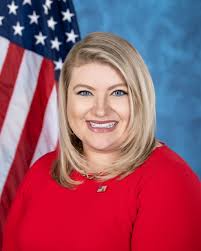
Introduction
Kat Cammack, a prominent Republican U.S. Representative from Florida’s 3rd congressional district, has garnered significant attention since her election in 2020. Her voice in Congress has become increasingly important, particularly in conversations surrounding economic recovery, healthcare, and veteran affairs. With a background that spans over a decade in public service, her influences and legislative decisions are building a notable profile in the current political landscape.
Political Background and Achievements
Cammack, who previously worked as the Deputy Chief of Staff for former Congressman Ted Yoho, brings a wealth of experience to the House. Since her oath in January 2021, she has focused on various key issues, such as small business support and addressing the needs of veterans. Notably, Cammack has been vocal about the struggles faced by Floridians post-COVID-19, advocating for policies that prioritize economic development and health resources.
In the 117th Congress, Cammack introduced several bills aimed at improving veterans’ well-being and promoting job creation. Her strong stances on these topics resonate with her constituents who are eager for change and improvement in their community and beyond. Cammack has also been active on social media, leveraging platforms to engage with her audience and promote her initiatives.
Current Events and Recent Developments
As of 2023, Kat Cammack has remained a staunch advocate for fiscal responsibility and reducing government spending, reflecting the conservative values of her district. Her recent involvement in legislative discussions about inflation and supply chain challenges demonstrates her commitment to tackling pressing issues impacting families across the United States. As a member of the House committee on Agriculture, Cammack plays a crucial role in addressing food supply and agricultural policies—areas that are vital to her constituents.
Moreover, Cammack’s focus on national security has seen her engaging in heightened discussions around border security and immigration policies, especially as the nation faces ongoing challenges in these areas. Her dedication to protecting borders is not only a reflection of her party’s agenda but also a direct response to concerns from constituents about safety and community integrity.
Conclusion
Kat Cammack’s rise in the political arena showcases the growing influence of younger leaders within the Republican Party. As she continues to champion the interests of her constituents, her legislative efforts are shaping the discourse on numerous national issues. Moving forward, the impact of her policies may have lasting effects on both her district and on broader political trends within the country. Readers can expect to see more from Cammack as she navigates her path in Congress, potentially serving as a role model for future generations of leaders.



